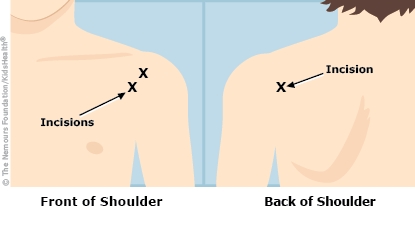A Bankart lesion is an injury to the shoulder joint that happens when the labrum (a ring of cartilage surrounding the socket of the shoulder joint) is torn. The torn labrum can cause pain and make it more likely that the shoulder will be dislocated (when the upper arm bone, the humerus, comes out of the shoulder socket).
Your child had surgery to fix the Bankart lesion. The shoulder needs to be kept still (immobilized) for a few weeks so it can heal. Afterward, your child can slowly return to normal activities.
Here's how to care for your child.


Follow your surgeon's recommendations for:

Your child:

Your child has severe pain in the shoulder or arm.

How does a Bankart lesion happen? A Bankart lesion occurs when the labrum is pulled away from the front part of the shoulder socket during a shoulder dislocation. This often happens during sports, especially contact sports or activities that involve throwing or falling.
Why is surgery done for a Bankart lesion? The surgery helps stabilize the shoulder so it is less likely to cause pain or be dislocated.
How long does it take to get back to regular activities and sports after shoulder Bankart repair? It usually takes 4 to 6 months for someone to recover from shoulder Bankart repair surgery and return to their regular activities and sports. A gradual physical therapy program helps restore strength and stability in the shoulder.